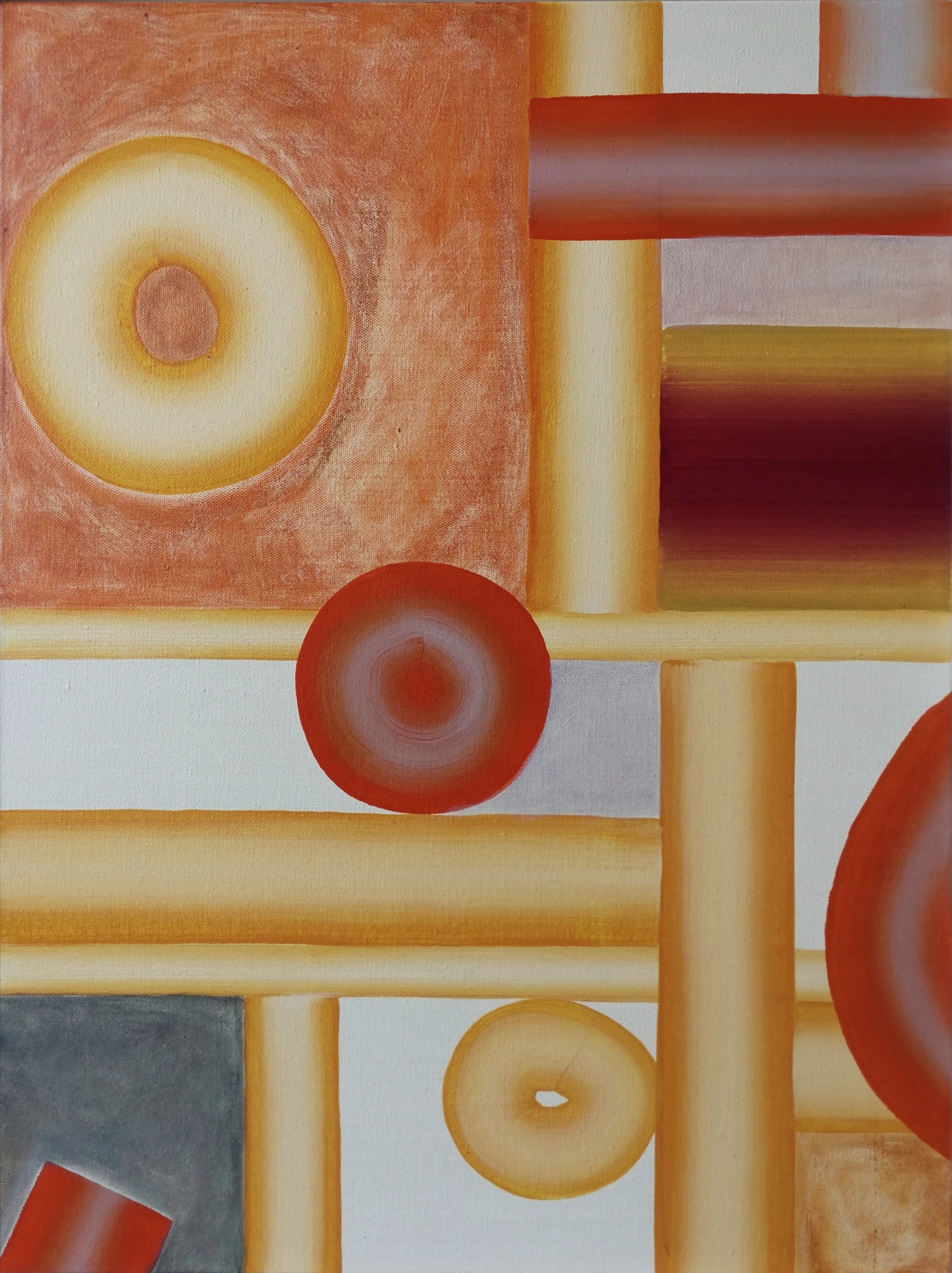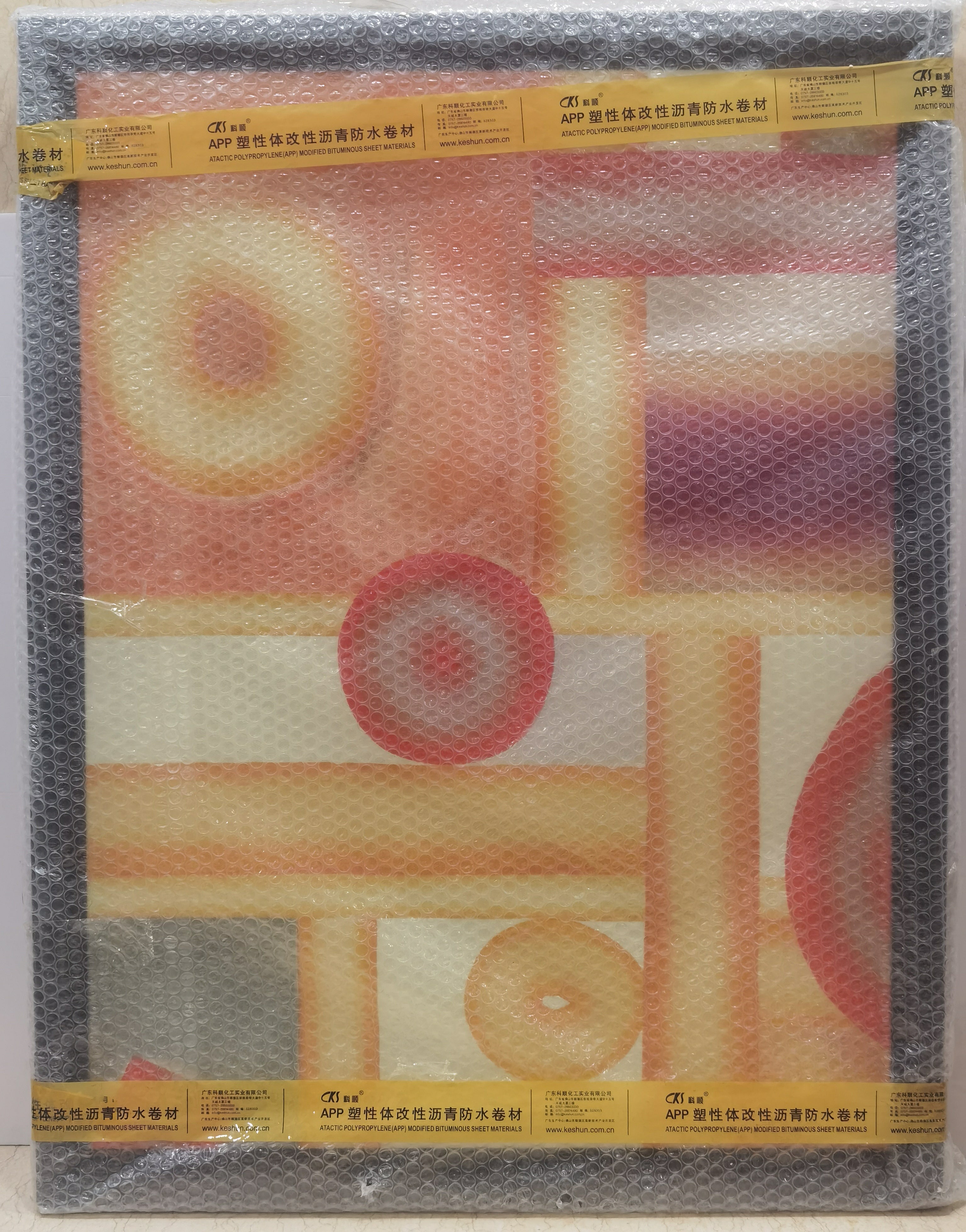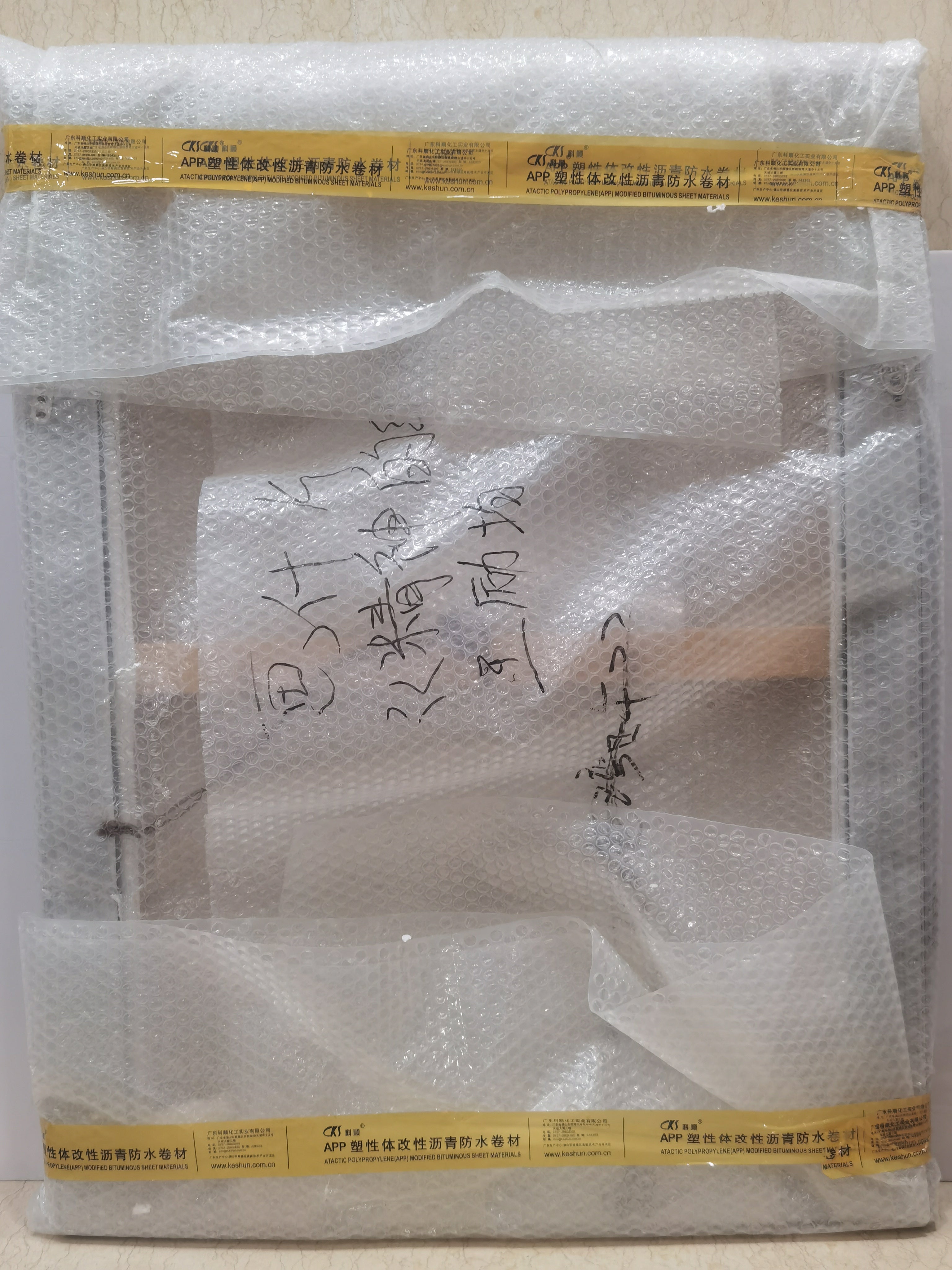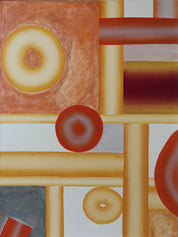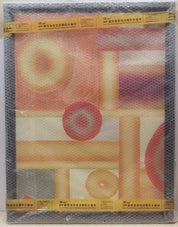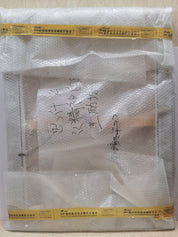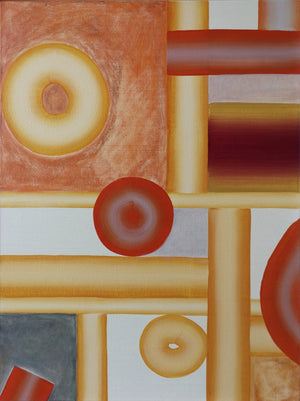Hello! Mondrian
Wang Lijun
Artwork Details
Artwork Description
Title: Hello! Mondrian
Artist: Wang Lijun
Date: n.d.
Medium: Oil on canvas
Dimensions: 60 x 80 cm (23.6 x 31.5 in)
1. Artwork Identification
Wang Lijun's Hello! Mondrian presents a vibrant interplay of geometric forms—circles, cylinders, and rectangles—in a warm palette of ochres, reds, and ambers. This piece pays a contemporary homage to Piet Mondrian, yet subverts his rigid grids through soft gradations, fluid borders, and spatial ambiguity.
2. Artistic Style and Influences
This composition reflects Wang’s integration of Western abstract modernism and Eastern philosophical aesthetics. While referencing Mondrian’s neoplasticism in Title: and form, Wang introduces an organic curvature and layered chromatics more aligned with Taoist ideals of flow and transformation. The spatial modulation recalls Deleuzian folds, while the relational contrast between form and void evokes Foucault’s discourse on power and interrelation.
3. Historical Context
Created in China’s post-1980s contemporary art surge, Hello! Mondrian exemplifies how Chinese artists negotiate tradition, modernism, and global art language. While rooted in Chinese visual culture—Wang’s lineage of embroidery and still-life—this work dialogues with global abstraction, filtered through the intellectual legacies of both Chinese spirituality and continental philosophy.
4. Provenance
Provenance documentation can be provided upon contact.
5. Condition and Conservation
The artwork is in very good condition. The surface shows no signs of wear, warping, or pigment fading. The canvas is taut and well-stretched, suitable for display without restoration.
6. Artistic Significance
Wang Lijun’s Hello! Mondrian distills decades of academic study and artistic experimentation into a refined visual statement. It exemplifies his capacity to transform rigid systems into expressive language, offering a metaphysical inquiry into perception, space, and the invisible forces connecting all forms. This work stands as a contemplative yet playful reflection on abstraction’s capacity to engage with spiritual and social realities beyond its formal constraints.

